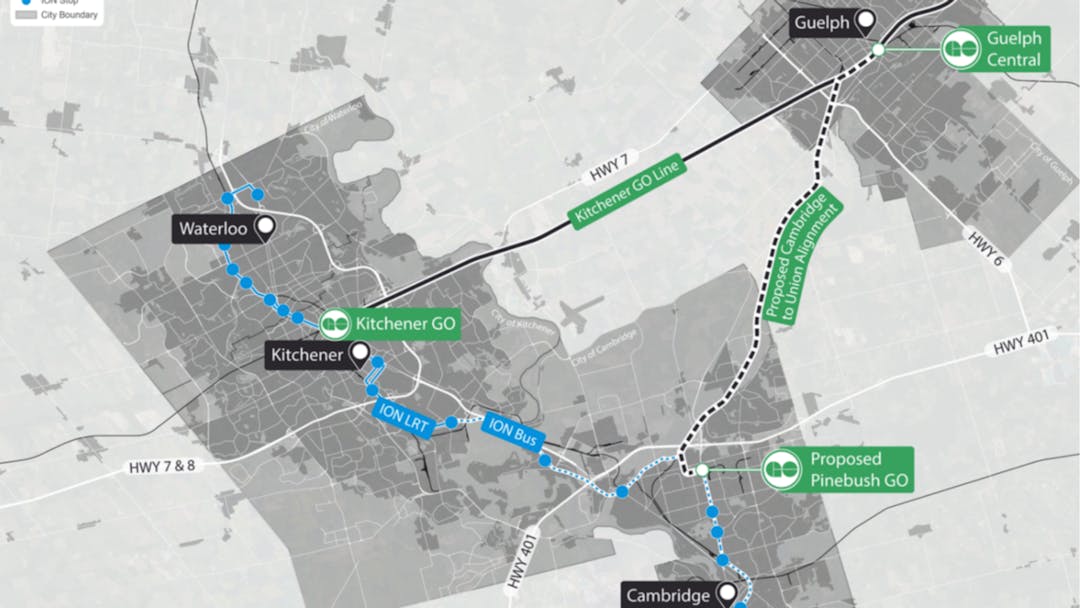From the Finch West LRT thread:
My fear is the LRT would end up like the ion LRT ,which is a great project, but runs at a snail pace.
I keep seeing this, but it actually doesn't. It's faster than the iXpress bus it replaced at all times of the day; waaay faster during peak times.
The signal priority works well, southbound from the hospital to Central Station is magic, and anyone demanding priority for Finch West, Eglinton, or Hurontario should treat themselves to this peek at what their world could be. That said, there are some issues that should be solvable:
- For nearside stops, the signal should trigger and the pedestrian crosswalks start counting the moment the operator closes the doors. Trains shouldn't have to inch a few meters from the platform to stop on a loop and then wait for the signal to start cycling. This would resolve a lot of the issues in downtown Kitchener. Better yet, put the loop at the stop and trigger the light when the train pulls in. By the time the ped countdown's finished and the cross traffic stopped, the train should be departing. If it's not and it misses the 10 second window for its transit signal, well; then it waits a cycle. If this happens consistently, tune it with with the necessary extra seconds delay to where missed cycles become a true exception rather than the rule. This should be a solvable problem.
- The magical priority waves should be able to continue around a corner. For whatever reason though, it feels like the programmers treat each corner as a reset button that blows the wave.
- There's a mysterious southbound slowdown at the facing point freight crossover in Waterloo Park. This is a movable frog switch; trains should NOT have to crawl through it, and the northbound train certainly doesn't. If it's the track geometry, rework it. If it's an ATP glitch, debug and resolve it. This has been going on since a few months after the line opened (perhaps since the day they enabled ATP), why has it not been fixed?
- There's another mysterious slowdown southbound after clearing the expressway tunnel and crossing the creek bridge 600 metres ahead of Hayward. I get that the Hayward S is an awkward situation forced by CN/CP not giving up the border of their interchange yard, but this happens well ahead of it, and in another ATP section just like Waterloo Park. Fix it. Heck, add a new signal block if that's what it takes.
I'd bet that simply resolving these could shave 5 minutes from the end-to-end trip time.
As a car driver, I also take issue with the signal programming: The gates for the Courtland Ave crossing drop far too early, holding up a lot of traffic unnecessarily and even backing up onto Manitou. Other gated crossings have developed similar issues, although there's still the odd one that's stellar in its brevity. I don't understand why these aren't measured *, evaluated, and the predictors tuned on an annual basis. If that's not in the current contract with Keolis, then it bloody well better be in the next one...
---
* Just shoot some video and note the time stamps, or do frame counts + 1 if you need absolute accuracy without undershooting, but there's no need to mobilize the expensive stopwatch and clipboard crews that were used during commissioning.





